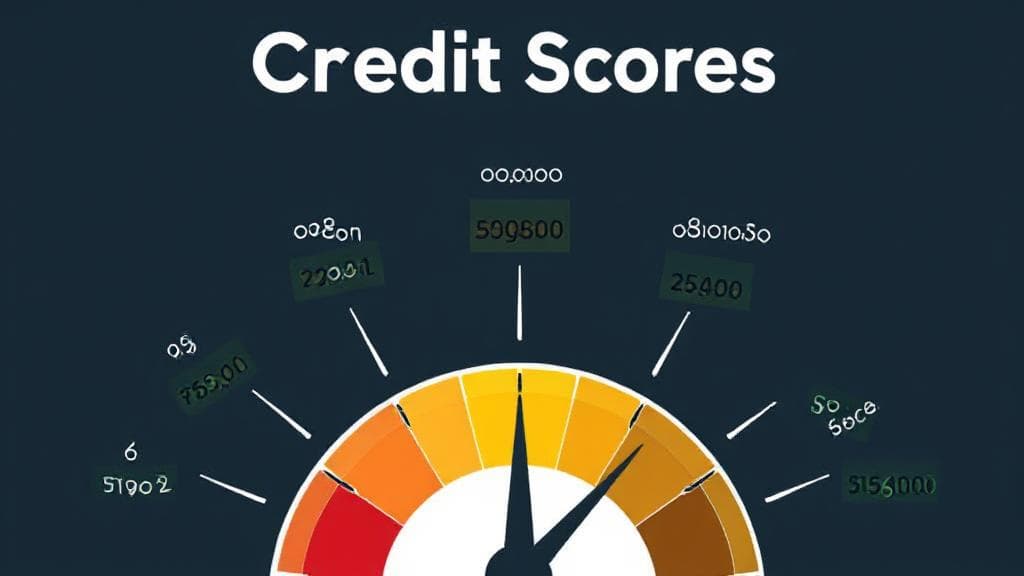Introduction to Credit Scores
Credit scores are numerical representations of an individual's creditworthiness, used by lenders to evaluate lending risk. These scores are crucial in determining whether you qualify for loans, credit cards, and rental agreements. Understanding the different types of credit scores and their accuracy can help you manage your financial health more effectively.
The Big Three Credit Bureaus
The three major credit reporting agencies - Equifax, Experian, and TransUnion - each maintain their own credit reports and generate their own scores. While they typically receive similar information from creditors, differences can occur due to:
- Timing of reported information
- Different scoring models being used
- Creditors reporting to some bureaus but not others
- Regional variations in data collection
Types of Credit Scores
FICO Score
The FICO Score, created by the Fair Isaac Corporation, is the most widely used credit scoring model, with over 90% of lenders using it. It ranges from 300 to 850 and considers five key factors:
- Payment History (35%): Your record of on-time payments
- Amounts Owed/Credit Utilization (30%): The total amount of credit and loans you're using
- Length of Credit History (15%): How long your credit accounts have been active
- Credit Mix (10%): The variety of credit accounts you have
- New Credit (10%): Recent credit inquiries and newly opened accounts
For more information, visit the official FICO website.
VantageScore
Developed collaboratively by the three major credit bureaus, VantageScore uses this methodology:
- Payment History (40%)
- Credit Age and Mix (21%)
- Credit Utilization (20%)
- Total Balances (11%)
- Recent Credit (5%)
- Available Credit (3%)
Industry-Specific Scores
Different industries may use specialized versions of credit scores:
| Industry | Score Range | Key Factors |
|---|---|---|
| Auto Lending | 250-900 | Previous auto loan history |
| Credit Card | 250-900 | Credit card payment behavior |
| Mortgage | 300-850 | Housing payment history |
Accuracy of Credit Scores
"No single credit score is 100% accurate for all lending decisions, as different lenders value different aspects of creditworthiness." - Consumer Financial Protection Bureau
According to the Federal Trade Commission, one in five consumers has an error on their credit report. The accuracy of credit scores can vary based on several factors:
Data Sources
Credit scores are calculated using data from credit reports. Discrepancies in these reports can lead to variations in scores. You can obtain a free annual credit report from each bureau at AnnualCreditReport.com.
Warning Signs of Inaccurate Scores
Watch for these red flags:
- Sudden significant changes
- Accounts you don't recognize
- Incorrect personal information
- Duplicate entries
- Outdated negative items
Best Practices for Credit Score Management
To maintain accurate and healthy credit scores:
- Pay all bills on time
- Keep credit utilization below 30%
- Limit new credit applications
- Maintain a diverse credit mix
- Review credit reports quarterly
- Dispute any errors promptly
- Monitor all three bureaus
The Future of Credit Scoring
Alternative data sources are increasingly being incorporated into credit scoring models, including:
- Rent payments
- Utility payments
- Bank account activity
- Mobile phone payments
- Social media data
These changes aim to provide more accurate assessments of creditworthiness, particularly for consumers with limited traditional credit history.
Remember that credit scores are dynamic and change regularly based on your financial behavior. While different scoring models may show varying results, focusing on fundamental credit-building practices will improve your scores across all models.
